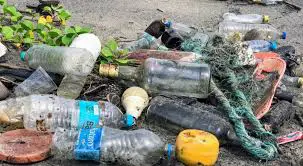Recyclables are materials which can be reprocessed into new products. Materials that can be recycled include aluminum and other metals, some types of plastic, glass, paper, and fibre products.
Recycling reduces, or diverts, waste from landfills and incinerators. It also conserves natural resources by lessening the demand to extract, harvest and process new raw materials. This in turn saves energy and can result in a reduction of greenhouse gas emissions.
Recycling can also support the local economy by creating a source of domestic materials, local manufacturing and job creation; it is estimated that for every 1,000 tonnes of waste diverted from landfill an average of seven jobs are created in the recycling industry (Ministry of Environment Conservation & Parks, 2019).
Materials accepted into recycling programs vary from municipality to municipality. Given these regional differences it can be challenging to accurately determine recycling rates at a provincial or national level.
However, some estimate put the Canadian recycling rate for residential and commercial sectors combined as low as 30% overall (Community Research Connections, 2018) and at 9% for plastics (Recycling Council of Ontario, 2019).
At the residential level, one of the greatest challenges in increasing recycling rates is communicating to residents what materials are accepted in their municipal recycling program. When recyclables are properly sorted at the curb, time and energy are saved at recycling facilities.
Conversely when non-recyclable materials enter the recycling stream, they are considered contamination. Depending on the nature and volume of the contamination all the impacted materials may be redirected to landfill.
Another challenge for individuals are misleading labels on products such as items which are identified as recyclable but are not readily accepted in a municipal waste program, examples include disposal coffee cups, coffee pods and plastic cutlery.

Figure: Recycling contamination rates for cities across Canada (CBC, 2018).
No city data available for Whitehorse, Yellowknife, and Prince Edward Island.
1. Organic Waste (Source Separated Organics – SSO)
Organic waste in Ontario is made up of leaf and yard waste, food waste, paper products, manure, and human waste. In 2015 Ontarians generated 3.7 million tones of food and organic waste, representing a significant source of waste production (Ministry of Environment, Conservation and Parks, 2019).
Read Also : Complete List of Recyclable Wastes (Waste Recyclables)
Organic waste requires mindful management as its decomposition generates carbon dioxide and methane (David Suzuki Foundation).
Additionally, the decomposition of organic waste creates compost, a valuable resource. If not lost to landfill, this nutrient rich organic matter can be added to soils and used as fertilizer. See section 3.4.1 to read more on composting.
Figure: 2015 Waste Streams in Ontario (Ministry of Environment, Conservation and Parks, 2019).
Other Materials 68%
7.9 million tonnes of other materials such as printed paper, packaging, electronics, and household hazardous waste
Food and Other Organic Wastes 32%
3.7 million tonnes of food and other organic wastes such as food scraps, soiled paper, and leaf and yard wastes
2. Household Organic Wastes
Household organic waste is a broad classification and there may be differences between municipalities with regards to which items they target and accept. According to Environment Canada commonly accepted items include:
- Grass, leaves, garden debris and weeds
- Tree and brush trimmings
- Bread, muffins, cake, cookies, pies, and dough
- Coffee grounds and tea bags
- Eggs and eggshells
- Fruit and vegetable peelings
- Meat, chicken, and fish including bones
- Nut shells
- Pasta and rice
- Sauces and gravy
- Solid dairy products
- Table scraps and plate scrapings
Household organics are collected through Yard Waste and Green Bin programs. Materials collected are processed using a variety of methods resulting in nutrient-rich compost which can be used to feed and to nourish soils. Common methods for processing organic waste will be covered in greater detail in section 3 of the guide.
3. Agricultural Waste
Agricultural waste is generated as a result of farming operations. Common agricultural wastes include animal waste such as manure and carcasses, plant waste from the processing or harvest of crops, and plastics from packaging.
Though water accounts for 75-95% of total livestock waste by volume, the remaining 25-5% is a combination of organic and inorganic matter which may support parasitic microorganisms and viruses (Obi et al, 2016).
Read Also : Types of Wastes: Solid Waste, Liquid Waste and Gaseous Waste
Contamination of livestock products heading for market with waste is a mean by which parasites and illness could be spread to the consumer.
Agricultural waste can contribute to air pollution if improperly stored or treated. This is usually a result of manure putrefaction, wherein manure can generate greenhouse gases (such as methane) on top of contaminating the surrounding water and potentially affecting the fertility of soil (Obi et al, 2016). For more information on the potential environmental impacts of waste, see Section 4.1.
In addition to these more benign forms of waste, agricultural waste can also include hazardous or toxic materials, such as pesticides in the form of herbicides, fungicides, and insecticides, among others.

